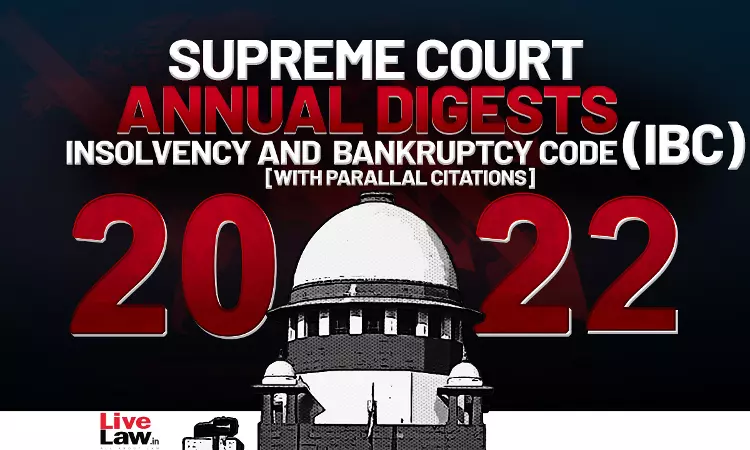Supreme Court Annual Digest 2022 - Insolvency and Bankruptcy Code (IBC) With Parallel Citations
LIVELAW NEWS NETWORK
28 Dec 2022 12:35 PM IST

Next Story
28 Dec 2022 12:35 PM IST
Insolvency andBankruptcy Code, 2016 - Appealchallenging NCLAT order which reversed the order of the NCLT wherein it hadheld that the application under Section 9 of the Insolvency and BankruptcyCode, 2016 was not time-barred - Allowed - The failure of the NCLAT as thefirst appellate authority to look into a very vital aspect such as this,vitiates its order, especially when NCLT has recorded...
